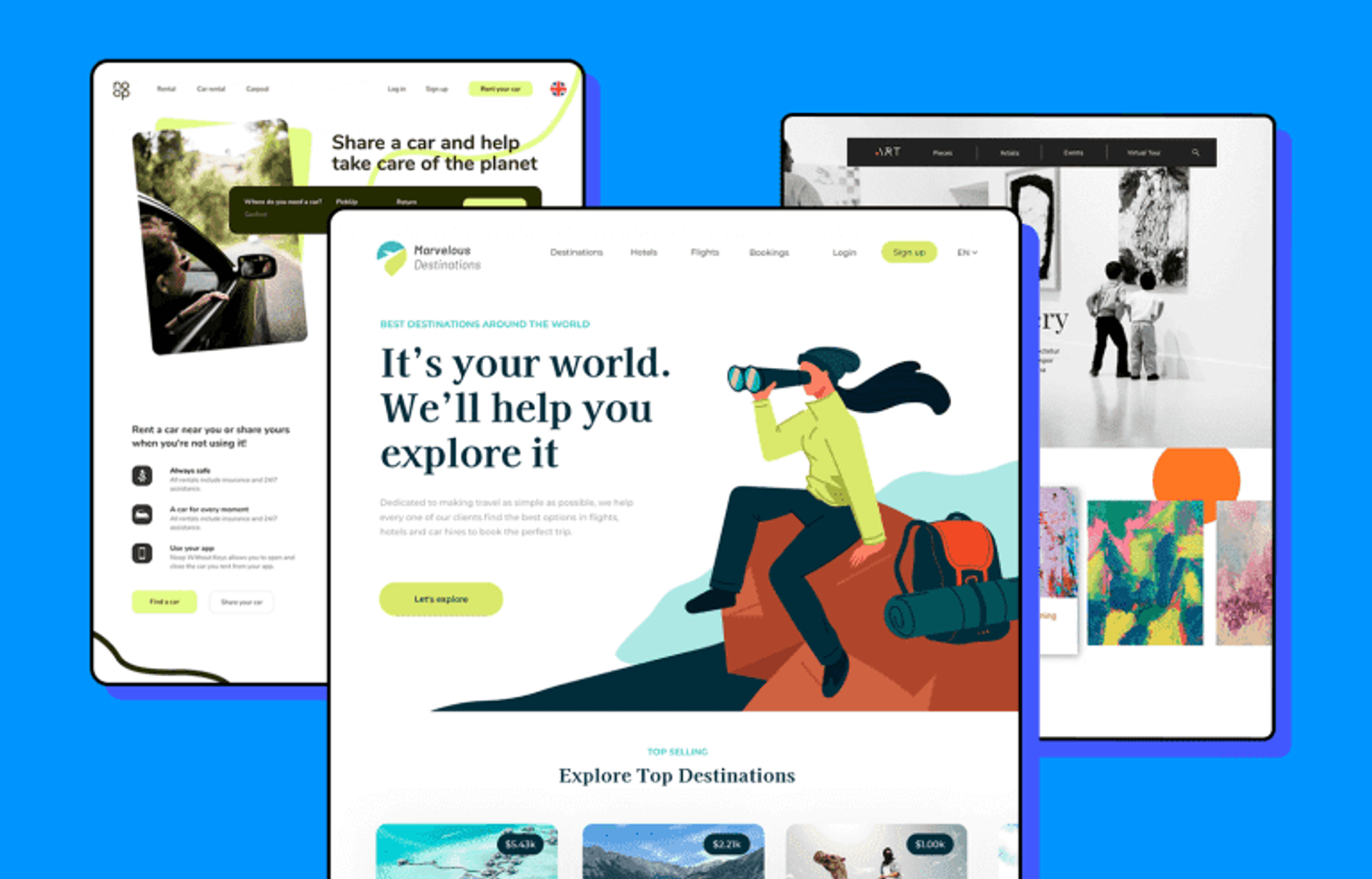Aligned Position Web Design: Crafting Visually Appealing Websites for Modern Businesses
Aligned Position Web Design: Crafting Visually Appealing Websites for Modern Businesses
Blog Article
The Very Best Kinds Of Web Layout to Improve Customer Experience and Engagement
In the ever-evolving landscape of electronic interaction, the effectiveness of Web layout considerably affects customer experience and interaction. Numerous style methods, such as minimalist, receptive, and interactive designs, each offer unique advantages that can provide to varied customer requirements.
Minimal Web Layout
As electronic landscapes come to be progressively cluttered, minimal Web layout has become an effective technique to enhancing individual experience. This style approach prioritizes simplicity, focusing on essential components while eliminating unneeded disturbances. By utilizing ample white area, straightforward navigating, and a restricted color palette, minimal layout promotes quality and guides customer attention to essential content.
The core principle of minimal website design is to create a smooth interaction for customers. By lowering cognitive tons, individuals can promptly realize details without really feeling bewildered. This straight method not only enhances use however also urges involvement, as visitors are most likely to discover a website that is visually attractive and easy to browse.
In addition, minimal design often highlights typography and images, utilizing these elements purposefully to share messages effectively. In significance, minimal Web layout is not simply a trend; it is a thoughtful methodology that identifies the relevance of user-centered style.
Receptive Website Design
In today's varied electronic atmosphere, responsive Web layout has come to be vital for creating a seamless user experience across a multitude of gadgets. As users accessibility websites on smart devices, tablet computers, laptops, and desktop computers, the capacity of a web site to adapt its format and material to different display sizes and resolutions is vital.
Receptive website design utilizes adaptable grids, photos, and CSS media questions to ensure that Web content exists optimally, despite the gadget made use of. This strategy not only boosts the visual charm of an internet site however additionally substantially improves functionality. Individuals are more probable to involve with a site that supplies a consistent experience, as it eliminates the stress of needing to zoom in or scroll exceedingly.
Moreover, internet search engine, including Google, focus on mobile-friendly websites in search rankings. By embracing responsive style, businesses can improve their exposure and get to a broader audience. This method also streamlines web site maintenance, as a solitary variation of the website can satisfy all tools, lowering the requirement for several versions. In summary, receptive Web design is a basic technique that boosts individual experience, engagement, and total contentment.
Interactive Website Design
Responsive website design lays the foundation for enhancing user experience, yet interactive Web layout takes this a step further by involving users in a more dynamic means - Aligned Position Web Design. By incorporating components such as computer animations, clickable models, and real-time comments, interactive website design captivates users, drawing them right into a richer browsing experience
This method not only fosters interaction however also motivates customers to explore material actively rather than passively eating it. Strategies such as gamification, where customers gain incentives for finishing tasks, can substantially enhance the time spent on a site and improve general satisfaction. Moreover, interactive features can streamline complex details, making it more delightful and digestible.

Incorporating interactive design components can also result in higher conversion rates, as individuals are more likely to engage with a website that actively entails them. Aligned Position Web Design. Eventually, interactive Web style transforms individual experiences right into remarkable trips, making sure that visitors return time after time
Flat Layout
Characterized by its minimalistic technique, level layout emphasizes simplicity and capability, removing unneeded aspects and concentrating on necessary attributes. This design philosophy focuses on use, making sure that individuals can navigate interfaces effortlessly and performance. By using a tidy visual, flat style eliminates the clutter frequently found in more luxuriant designs, thus enhancing customer emphasis on material and functionality.
The characteristic of flat design exists in its usage of bold colors, basic typography, and geometric shapes. These elements add to a visually attractive user interface that is both modern and friendly. In addition, flat style fosters a sense of clarity, enabling individuals to determine vital activities and information without disturbance.
Furthermore, level layout is especially effective in receptive Web style, as its simplicity equates well throughout different devices and display dimensions. official statement By focusing on important attributes, level style not only fulfills user demands yet also motivates smooth communication, making it a crucial part of effective Web design techniques.
Adaptive Website Design
Adaptive website design customizes the user experience by developing numerous fixed formats tailored to different screen dimensions and gadgets. Unlike responsive layout, which fluidly changes a solitary design, adaptive design utilizes distinctive designs for specific breakpoints, guaranteeing optimal discussion on numerous systems. This technique enables designers to concentrate on the distinct qualities of each gadget, boosting functionality by delivering exactly what customers require based on their context.
One of the key benefits of flexible website design is its capacity to optimize lots times and efficiency. By offering tailored material and photos that fit the customer's gadget, websites can decrease information usage and enhance loading speeds. This is specifically advantageous for users with slower links or restricted data plans.

Furthermore, flexible layout facilitates an extra regular and controlled branding experience. Considering that developers produce multiple designs, they can make certain that the aesthetic aspects straighten with the brand name's identification throughout different platforms - Aligned Position Web Design. This leads to a natural customer experience, enhancing interaction and advertising user retention
Verdict
Finally, the assimilation of minimalist, responsive, and interactive website design concepts considerably improves customer experience and involvement. Minimal design promotes quality and emphasis, while receptive design makes sure flexibility throughout various tools, advertising accessibility. Interactive layout captivates users via dynamic aspects, encouraging expedition and personalization. Collectively, these style approaches contribute to the production of easy to use settings that not only boost complete satisfaction but also drive higher conversion rates, emphasizing their important significance in contemporary Web design methods.

Minimalist design cultivates clarity and emphasis, while responsive style ensures versatility across numerous tools, advertising accessibility. Collectively, these design comes close to contribute to the creation of straightforward atmospheres that not only enhance contentment however also drive higher conversion prices, underscoring their critical significance in contemporary Web style approaches.
Report this page